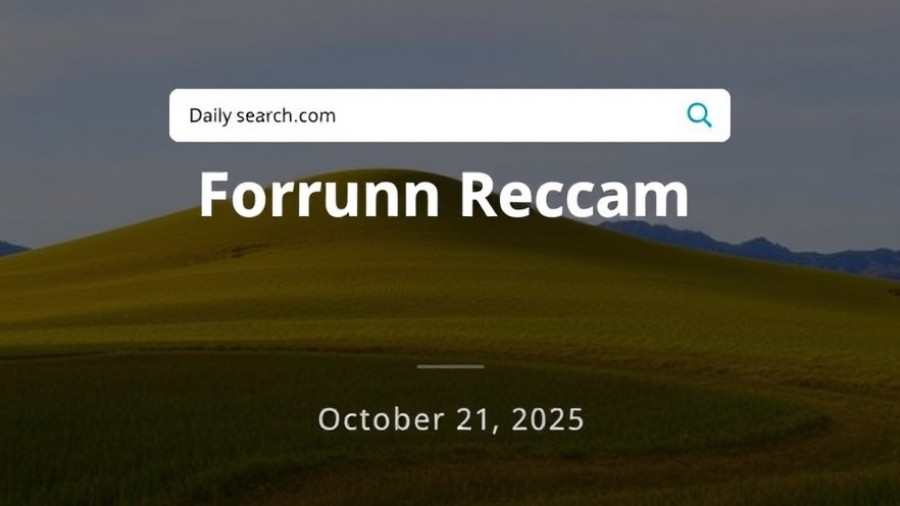
The Unfolding Landscape of Google Ads: Key Updates and Insights for 2025
As we dive into the latest innovations in Google Ads from October 2025, it's evident that change is afoot in the digital advertising realm. Small business owners and marketers must navigate these updates not just to stay relevant but to leverage these changes for enhanced visibility and operational efficiency. Recent insights reveal significant shifts, including Google's approach to core updates, innovative platform features, and the increasing reliance on artificial intelligence.
Google's Promised Core Updates: What Happened?
Ten months ago, Google executives assured that we would witness a surge in core updates throughout the year. Yet, as we approach the end of 2025, the anticipated frequency and impact of these updates have largely failed to materialize. This lack of additional core updates raises questions over Google's commitment to providing marketers with the resources needed to adapt to evolving consumer behaviors and industry standards.
New Google Ads Policies: Streamlined Management or Increased Risk?
Among the significant updates impacting advertisers is the new policy whereby Google will delete Ads accounts that show no activity for six months. This rule aims to streamline Google Ads management, reducing clutter on the platform. However, for small businesses that may have slow periods, this could pose a risk of losing access to their advertising account altogether. The warning signals are clear: consistency in activity is paramount, prompting businesses to strategize around maintaining active profiles even during lean times.
AI Expansions in Google Ads: A Double-Edged Sword?
The introduction of AI features in Google Ads has been met with both excitement and skepticism. The new AI features, including the AI Max update, aim to simplify campaign management. For instance, AI Max enables advertisers to allocate their budgets seamlessly across various Google platforms, using real-time data to determine the most efficient spending strategies. However, this advanced automation also raises concerns over transparency and control. Many marketers feel a loss of visibility into how their campaigns are optimized, making it critical to balance reliance on AI with strategic oversight.
Insights from Industry Leaders: What They're Saying
Industry discussions are more relentless than ever, primarily focused on how AI impacts marketing strategies. One KEY POINT emerging from search forums emphasizes the urgent need for comprehensive education surrounding LLMS (Large Language Models) and their operational dynamics. Marketers must be equipped with the knowledge that will enable them to effectively use these innovative tools, ensuring that their businesses thrive in this AI-powered landscape.
Risk Factors and Opportunities in Audience Targeting
Updates in audience targeting have also been prominent, with Google introducing features like enhanced customer match integrations and advanced targeting options that cater to businesses' need for precision. While the ability to find lookalike audiences effectively broadens outreach, marketers must remain cautious. The AI's reliance on historical data means that without quality customer data, results can come up short. Businesses need to refine their audience data to avoid wasted ad spend, especially given the platform's push toward automation.
Acting on These Changes: Best Practices for Small Businesses
In light of these developments, small business owners and agencies need to adapt strategically. Users should:
- Monitor Campaign Activity: Regularly evaluate campaign performance to ensure sustained engagement.
- Refine Audience Data: Invest time in curating high-quality data that enhances targeting precision.
- Embrace AI Wisely: While leveraging AI capabilities, maintain oversight to understand the directions taken by the algorithms.
As marketers, understanding the capabilities and limitations of Google Ads in this evolving environment is now more critical than ever. By harnessing AI while keeping human insights at the forefront, small businesses can create robust advertising strategies that stand the test of rapid digital trends.
Conclusion: The Path Forward
In an era where automation is becoming the norm, the importance of strategic control cannot be overstated. While Google Ads has made remarkable strides, it presents a paradox for marketers as they seek efficiency without sacrificing transparency or strategic input. By staying informed and adaptable, marketers can navigate these complexities to optimize their digital advertising efforts effectively.
To dive deeper into this complex landscape and foster a more strategic approach in your advertising, consider exploring AI solutions that align with your business goals. The future of advertising is not just automated—it’s about finding the right tools that work in your favor.
 Add Row
Add Row  Add
Add 




Write A Comment